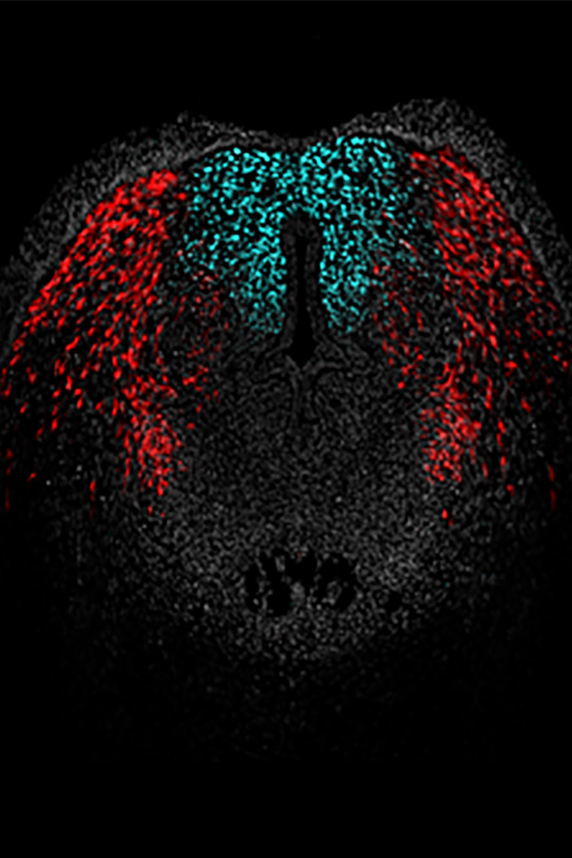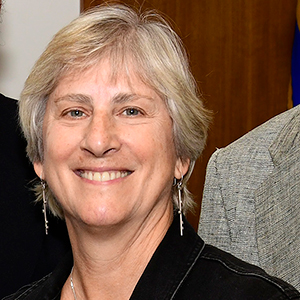Ciro Amato, Ph.D., a postdoctoral fellow in the NIEHS Reproductive Developmental Biology Group, earned first place for his oral presentation at the prestigious International Symposium on the Biology of Vertebrate Sex Determination, which was held Oct. 4-6.
 “Surgical corrections of hypospadias typically require multiple attempts, and patients often have complications in penile function after surgery,” noted Amato. (Photo courtesy of Steve McCaw / NIEHS)
“Surgical corrections of hypospadias typically require multiple attempts, and patients often have complications in penile function after surgery,” noted Amato. (Photo courtesy of Steve McCaw / NIEHS)He presented his research into novel genetic contributors to hypospadias, a birth defect experienced by one out of 120 boys. Hypospadias occurs when the opening of the urethra develops along the shaft of the penis, sometimes even close to the scrotum, rather than the tip of the organ.
More than 200 scientists from 15 countries attended the virtual meeting, and more than 100 oral and poster presentations were given by the trainees. The international symposium brings together experts on sex determination, chromosome biology, and human disorders of sex development.
Profound impact in the field
“My research focuses on how cells communicate and coordinate to form structures that are then used throughout the life of the organism,” said Amato.
He highlighted a newly discovered population of cells that migrate from the hindlimb into the penis of the developing mouse embryo. Once these cells settle in the penis, they extensively interact with surrounding cell populations through various signaling molecules, noted Amato.
“I found that when I removed these cells from the penis, there were drastic deformities in penis development,” he explained. “The urethra did not form a proper tube in the penis. The main causes of this condition, which is called hypospadias, remain a mystery, but studying these cell populations will help us identify novel biological mechanisms that may play a role.”
Amato and his mentor Humphrey Yao, Ph.D., head of the Reproductive Developmental Biology Group, recently published this research in the Proceedings of the National Academy of Sciences. (Their work was selected as an Environmental Factor Paper of the Month(https://factor.niehs.nih.gov/2021/8/papers/dir/#a5).)
 Yao’s research focuses on defining the cellular processes that lead to the development of male and female reproductive systems. (Photo courtesy of Steve McCaw / NIEHS)
Yao’s research focuses on defining the cellular processes that lead to the development of male and female reproductive systems. (Photo courtesy of Steve McCaw / NIEHS)“Dr. Amato spearheaded a project on the development of external genitalia that has a profound impact in the field,” Yao said. “He is not only a deep thinker but also a tremendous colleague who genuinely cares about others. This award exemplifies the quality of his research and his excellent presentation skills.”
Building on previous success
Amato’s latest prize builds on his recent successes sharing his research on hypospadias. In June, he and 16 other NIEHS early-career scientists received the 2022 National Institutes of Health Fellows Award for Research Excellence. The award recognizes intramural postdoctoral trainees for their scientific research, which is judged on merit, originality, experimental design, and overall quality. Amato and his peers each won $1,500 to present their work at a scientific meeting, and they will help to judge next year’s competition.
Also, last year, at the 18th annual NIEHS Science Day event, which showcased institute trainees’ research, he won best oral presentation. Before that, a scientific image he created as part of his work was selected for public display at the NIEHS campus (see image at bottom).
Citations:
Mai CT, Isenburg J, Langlois PH, Alverson CJ, Gilboa SM, Rickard R, Canfield MA, Anjohrin SB, Lupo PJ, Jackson DR, Stallings EB, Scheuerle AE, Kirby RS; National Birth Defects Prevention Network. 2015. Population-based birth defects data in the United States, 2008 to 2012: presentation of state-specific data and descriptive brief on variability of prevalence. Birth Defects Res A Clin Mol Teratol 103(11):972–993.
Amato CM, Yao HH-C. 2021. Developmental and sexual dimorphic atlas of the prenatal mouse external genitalia at the single-cell level. Proc Natl Acad Sci U S A 118(25):e2103856118.
(Tara Ann Cartwright, Ph.D., is a technical writer-editor in the NIEHS Office of Communications and Public Liaison.)

Cross section of embryonic mouse external genitalia reveals two distinct cell populations. Cyan: foxl2plus cells. Red: tdTomato cells. (Image courtesy of NIEHS)









